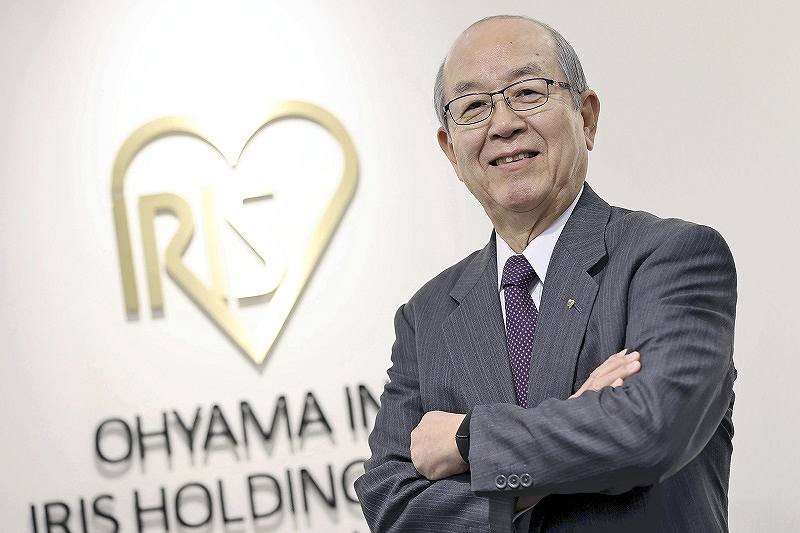
Iris Ohyama Chairman Kentaro Ohyama speaks in Sendai in February 2021.
11:07 JST, October 24, 2022
TOKYO (Jiji Press) — More and more manufacturers are shifting their production back to Japan as part of moves to review their supply chains after disruptions due to the COVID-19 pandemic and the U.S.-China trade war.
Some have relocated their manufacturing back to Japan to take advantage of stronger export competitiveness following the yen’s fall to 32-year lows versus the dollar.
The historic depreciation of the Japanese currency may become a major turning point for manufacturers that have moved their production operations from Japan to overseas for a long time.
Iris Ohyama Inc., a household goods and appliances maker based in Sendai, started to shift manufacturing of around 50 plastic products from China to plants in Japan in September.
Soaring crude oil prices have raised the costs of transporting products to Japan. “We can reduce costs by 20% on average by switching to domestic production,” an Iris Ohyama official has said.
Apparel maker World Co. has enhanced production capacities at factories in Okayama Prefecture and elsewhere, increasing its domestic production rate for clothes and other items sold at department stores from 40% to 90%.
The company took the action in response to disrupted imports from abroad due to COVID-19 lockdowns.
JVC Kenwood Corp. will transfer its production of car navigation systems to Japan from Indonesia and China, increasing production capacity by fivefold at a plant in Ina, Nagano Prefecture.
While these moves involve domestic production of products for the Japanese market, a subsidiary of electronics giant Hitachi Ltd. plans to double the proportion of domestically made white goods appliances shipped overseas to 10% by the end of next March.
The weaker yen boosts the competitive power of Japanese companies overseas. In an economic package to be compiled this month, the government plans to include measures to aid companies trying to expand their operations to take advantage of the weaker yen.
Still, it takes time to realize returns from investments made to transfer production back to Japan. In addition, the situation may turn unfavorable to such shifts.
It is still unclear as to whether the moves to shift production back home will spread to more companies because there are cases in which basing production in fast growing markets overseas is more advantageous.
“Unless the yen’s depreciation takes hold, companies will not make aggressive investments in Japan,” said Hideo Kumano, economist at Dai-ichi Life Research Institute Inc.
"Business" POPULAR ARTICLE
-

Tokyo Economic Security Forum to Hold Inaugural Meeting Amid Tense Global Environment
-

Keidanren Chairman Yoshinobu Tsutsui Visits Kashiwazaki-Kariwa Nuclear Power Plant; Inspects New Emergency Safety System
-

Imports of Rare Earths from China Facing Delays, May Be Caused by Deterioration of Japan-China Relations
-

University of Tokyo Professor Discusses Japanese Economic Security in Interview Ahead of Forum
-

Japan Pulls out of Vietnam Nuclear Project, Complicating Hanoi’s Power Plans
JN ACCESS RANKING
-

Tokyo Economic Security Forum to Hold Inaugural Meeting Amid Tense Global Environment
-

Keidanren Chairman Yoshinobu Tsutsui Visits Kashiwazaki-Kariwa Nuclear Power Plant; Inspects New Emergency Safety System
-

Imports of Rare Earths from China Facing Delays, May Be Caused by Deterioration of Japan-China Relations
-

University of Tokyo Professor Discusses Japanese Economic Security in Interview Ahead of Forum
-

Japan Pulls out of Vietnam Nuclear Project, Complicating Hanoi’s Power Plans

























